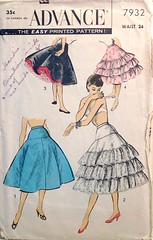I’ve spent a significant portion of the last five years carving out my corner in the world. In so doing, I have acquired several items that are expressive of my passion for antiques and vintage living.
Foremostly, hats. All shapes and sizes, and they must be elegant. I have heard that some people are “hat people,” and some people are not. I’m not sure I believe that, because after quite a few hours of research, I’ve discovered there are about as many types of hats as there are countries in the world.
With that kind of variety, you will most certainly be able to find a hat that suits you even if people tell you (or you tell yourself) that you are not a “hat people.” Hats are a beautiful expression of personality, and with the right hat, everybody is a “hat people.”
I love the example of Jacqueline Kennedy. I read in another vintage blog that she had a designated personal stylist, fashion designer Oleg Cassini, who was responsible for dressing her throughout her career as First Lady. She was henceforth a trendsetter, and was the woman to bring to the world the pillbox hat. Thank you to Lisa, writer of the Vintage Fashion Librarian blog, for a fashionable history of the fashionable Jackie O.
There’s no way I could write about every hat known to man, because frankly I’m not that interested in conical Asian hats or baseball caps. I can, however, offer an exposition of the more interesting hat types one finds in antique shops and can easily examine for quality.
Soon I will post my own examples of these hats - as many as I have (and sadly that does not include the well-known top hat) - so you can see how they look.
:: Types of hats ::
Cloche
This word is French for “bell,” and the hat looks like its name. Very popular in the 1920s.
Chapeau
Also French, this hat has a wide brim that is meant to shield one from the weather.
Pillbox
A hat worn on the back of the head and designed to draw attention to the face. Designed by Halston for Jackie Kennedy on the occasion of her husband’s inauguration in 1961.
Straw
A brimmed hat made from reeds or straw; one of the oldest hat types in human history. In women’s hat fashion, this hat is often shaped into a bonnet and decorated with ribbons, flowers, etc.
Turban
In the context of women’s fashionable hats in the last two centuries, these hats were often sewn to a foundational hat so as to be more easily removed. Most popular in the early 20th century.
Pork Pie
Quite popular in the 1990s, this hat has a flexible brim, flat top, and is crown-shaped with an indentation around the top.
Trilby
Most popular in the 1960s (and worn more by men than women), this hat is one of the more popular hats of today, reminiscent of gangster-style fedoras. The brim is turned up at the back, and the top of the crown is pinched in the front so as to be easily removed. Its name comes from George du Maurier’s novel Trilby.
Glengarry Cap
An alternative to the Balmoral bonnet, this hat is boat-shaped, and has a toorie (little pom-pom) on the top. It also has ribbons down the back, and a rosette cockade (knot of colored ribbons) on the side. Believe it or not, this hat is traditionally worn by men. In Scotland. That should make it less surprising. Those men also wear skirts.
Bandeau
This is often a trim for another type of hat, being a kind of headband. Sometimes it has a stiff structure, sometimes not.
Bonnet
Originally the name for men’s headgear but now worn primarily by women and children, this hat has a deep brim and most often ribbons to tie it under the chin. Very stylish and with a myriad of variations throughout the Regency and early Victorian eras, bonnets were eventually replaced by veiled hats with less brim in the mid- to late-19th century.
Beret
A cousin of the tam o’ shanter of Scotland, this hat is soft, round, and flat-crowned. Usually one thinks of a mustachioed French artist with a palette and paintbrush in his hand, but although this hat was mass-produced first in France and Spain in the 19th century, this hat has been worn since the Bronze Age.
Fascinator
One doesn’t know where to start--there are so many options when it comes to this headpiece! Typically an accessory of formalwear, fascinators are worn by women only--attached to the head in lieu of a hat. These were popularized in the early 20th century--think 1920s flapper headbands. Before that, they were actually a lacy head covering bedecked with feathers.
Tudor bonnet
This hat is reminiscent of Henry VIII, yes, but is now worn mostly in academic circles (go to a college graduation ceremony sometime and check out the faculty). It’s a soft, round cap with a stiff little brim with a tassel hanging from it. Frankly, it looks much more stylish - although slightly less recognizable - than the standard mortarboard one wears at one’s own graduation ceremony.
Top hat
Worn, I am told, tilted exactly 10 degrees, this hat ranks among the most recognizable, most noble hats in the history of millinery. Made famous by Lord Ribblesdale in a portrait, there is a popular myth that it was first worn by John Hetherington, who was thrown in jail for it. Sadly, that story is not true, as these hats predated the 19th century. Also made famous by Uncle Sam himself, this wonderful hat is tall with a flat crown and is often made of felted beaver fur. Most excitingly, these hats were made collapsible at one point because they took up too much space in cloakrooms! Read that history here.






















